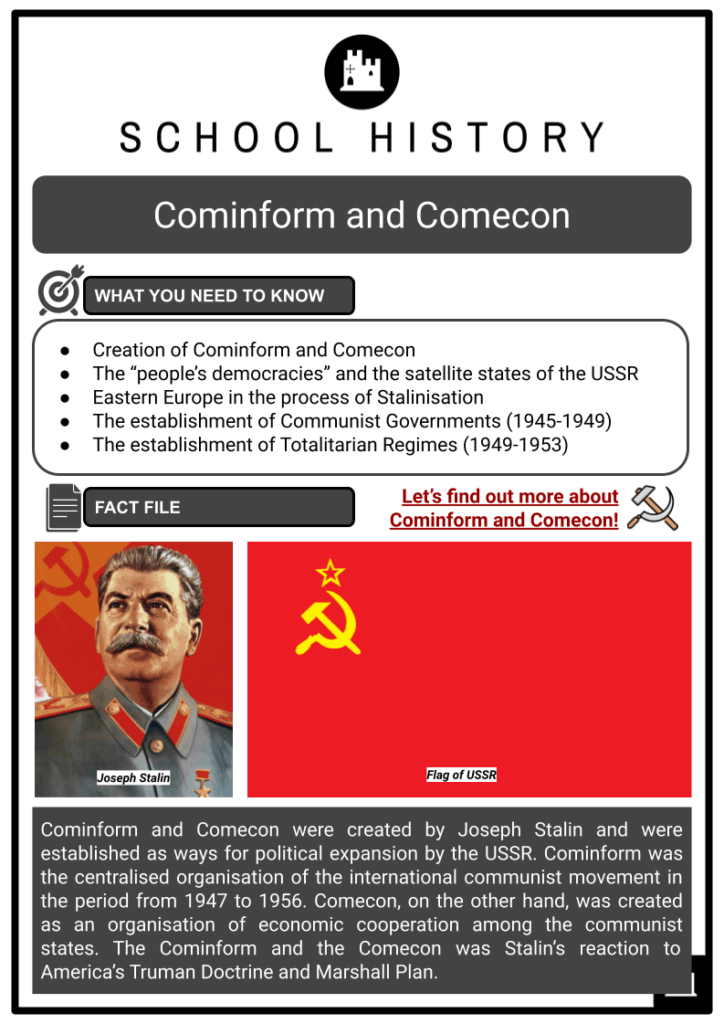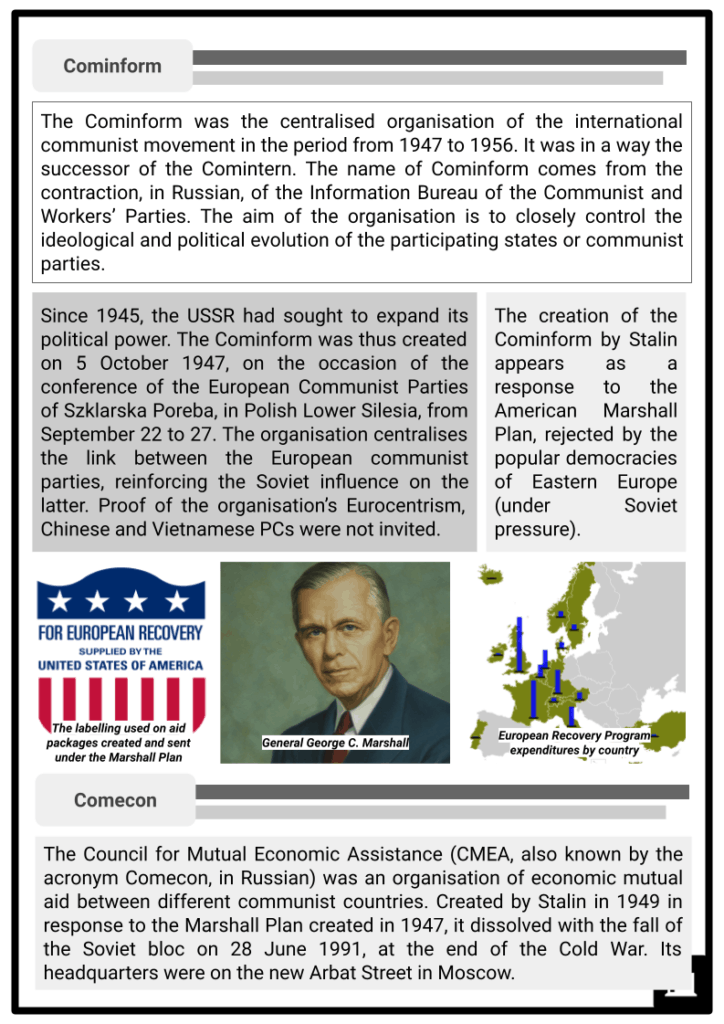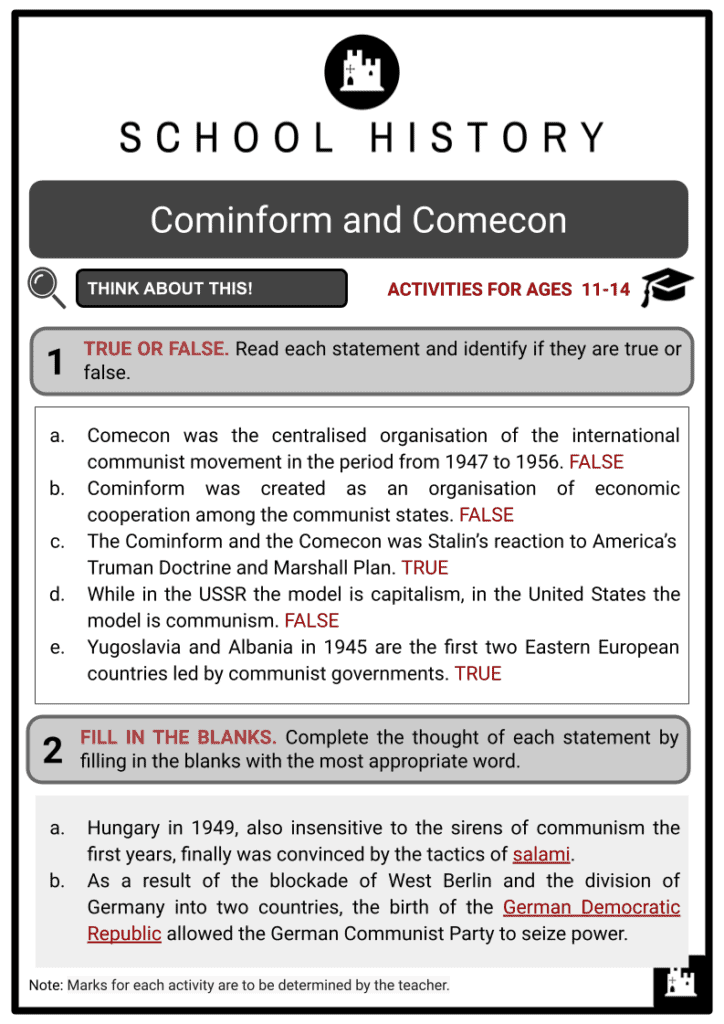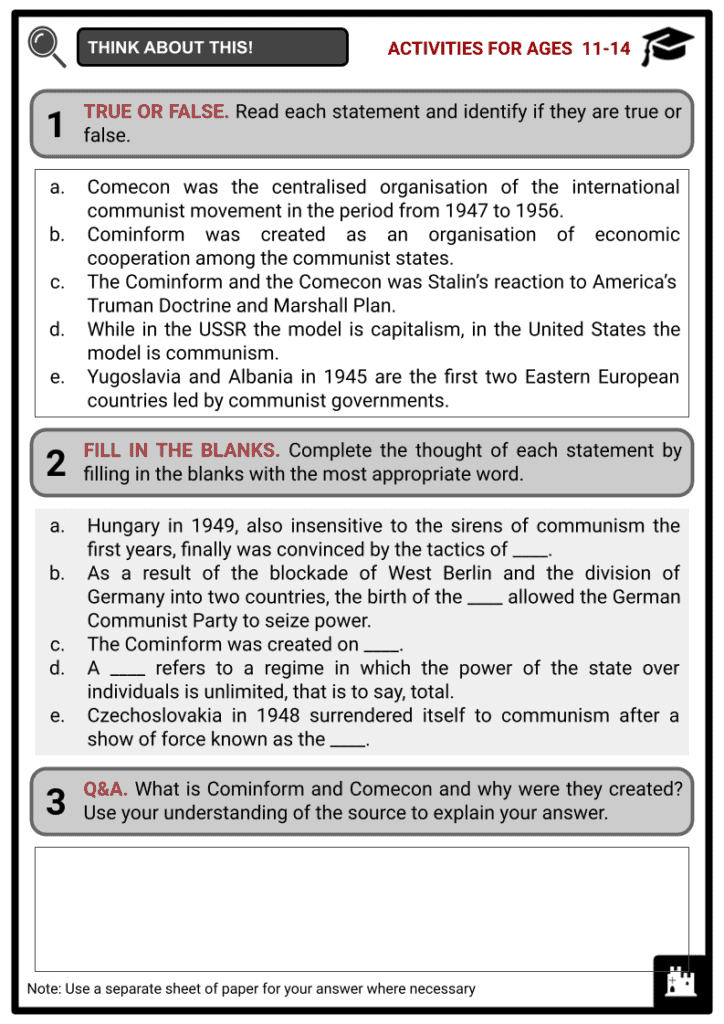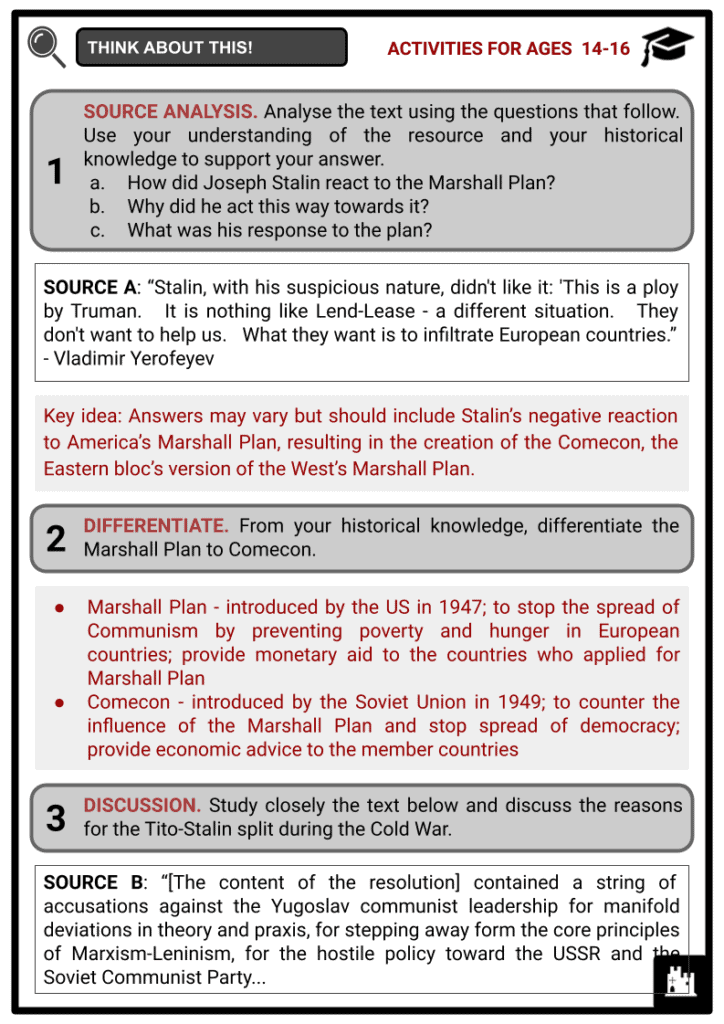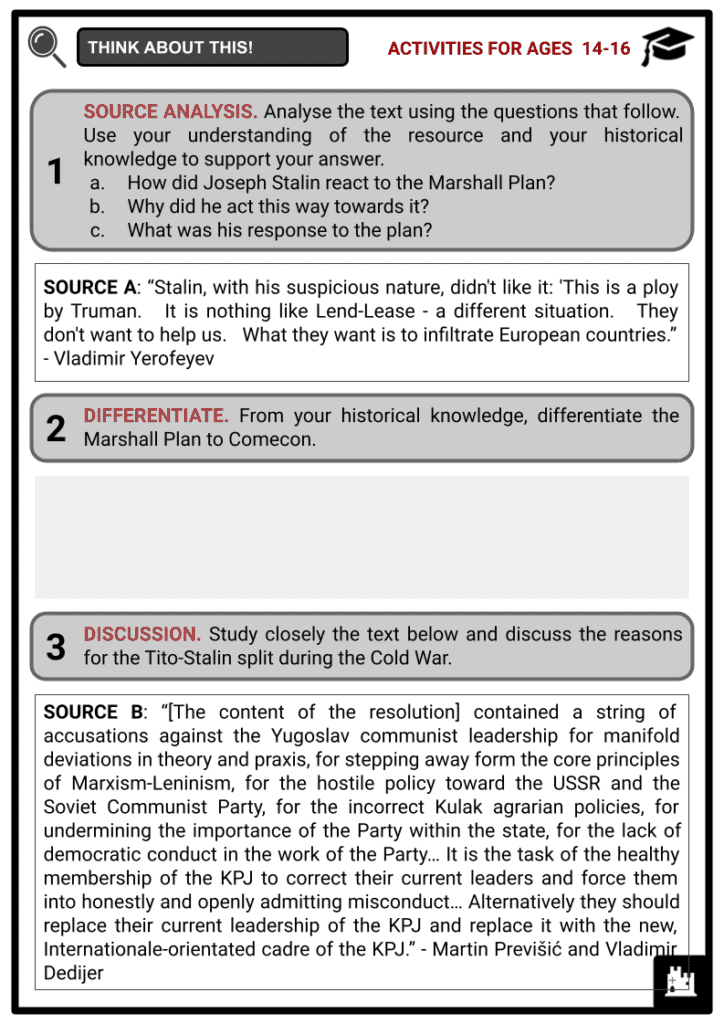Download Cominform and Comecon Worksheets
Do you want to save dozens of hours in time? Get your evenings and weekends back? Be able to teach Cominform and Comecon to your students?
Our worksheet bundle includes a fact file and printable worksheets and student activities. Perfect for both the classroom and homeschooling!
Table of Contents
Add a header to begin generating the table of contents
Summary
- Creation of Cominform and Comecon
- The “people’s democracies” and the satellite states of the USSR
- Eastern Europe in the process of Stalinisation
- The establishment of Communist Governments (1945-1949)
- The establishment of Totalitarian Regimes (1949-1953)
Key Facts And Information
Let’s find out more about Cominform and Comecon!
- Cominform and Comecon were created by Joseph Stalin and were established as ways for political expansion by the USSR. Cominform was the centralised organisation of the international communist movement in the period from 1947 to 1956. Comecon, on the other hand, was created as an organisation of economic cooperation among the communist states. The Cominform and the Comecon was Stalin’s reaction to America’s Truman Doctrine and Marshall Plan.
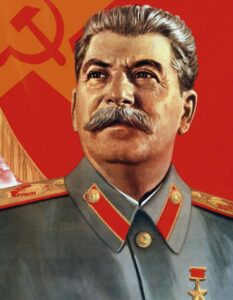
Cominform
- The Cominform was the centralised organisation of the international communist movement in the period from 1947 to 1956. It was in a way the successor of the Comintern. The name of Cominform comes from the contraction, in Russian, of the Information Bureau of the Communist and Workers’ Parties. The aim of the organisation is to closely control the ideological and political evolution of the participating states or communist parties.
- Since 1945, the USSR had sought to expand its political power. The Cominform was thus created on 5 October 1947, on the occasion of the conference of the European Communist Parties of Szklarska Poreba, in Polish Lower Silesia, from September 22 to 27. The organisation centralises the link between the European communist parties, reinforcing the Soviet influence on the latter. Proof of the organisation’s Eurocentrism, Chinese and Vietnamese PCs were not invited.
- The creation of the Cominform by Stalin appears as a response to the American Marshall Plan, rejected by the popular democracies of Eastern Europe (under Soviet pressure).
Comecon
- The Council for Mutual Economic Assistance (CMEA, also known by the acronym Comecon, in Russian) was an organisation of economic mutual aid between different communist countries. Created by Stalin in 1949 in response to the Marshall Plan created in 1947, it dissolved with the fall of the Soviet bloc on 28 June 1991, at the end of the Cold War. Its headquarters were on the new Arbat Street in Moscow.
- The aim of this body was the best planning and specialisation of the national industries of the communist countries. After the Second World War, the so-called “socialist” countries adopted bilateral clearing (compensation) within the CMEA, the only method applicable to the foreign exchanges of a country with a planned economy. They then introduced multilateral clearing, which is more conducive to overcoming the obstacles to the development of CMEA countries and where the “transferable ruble” should act as an accounting unit. At the macroeconomic level, the “transferable ruble” was a means of comparing the volume of reciprocal deliveries.
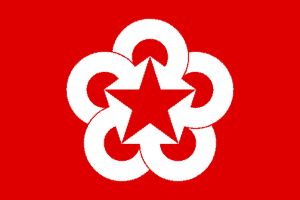
- The creation of the CMEA, which can be seen as a reaction to the Marshall Plan that helped rebuild Western Europe (West Germany, France, etc.) and the formation of the “free world”, led to economic growth of the Eastern European satellite countries towards the Soviet Union, inter alia by the obligation to use the “transferable ruble” in interstate transactions, thus reinforcing the hegemony of the Soviet Union.
- The organisation also played a vital political role for the USSR, since it enabled it to obtain a great deal of weight in domestic affairs in exchange for subsidies, loans, or the sending of labour.
- Eastern Europe, as opposed to the “bourgeois democracies” of Western Europe, refers to the “people’s democracies” of Central and Eastern Europe (CEECs) and the USSR of which they are satellite states.
- They are satellite states not only because their political and social model is directly inspired by the Soviet communist regime, but also because the internal and external policies of all these countries obey, or at least are supposed to obey strictly, the orders of Moscow, via the Cominform.
- The reality is less smooth. During the second half of the twentieth century, in fact, two periods mark the history of the people’s democracies:
- During the first, which began in 1945 with the end of the Second World War, and which ended in 1953 with the death of Stalin, Eastern Europe was on the way to Stalinisation; and
- During the second, on the other hand, which began in 1953 with the death of Stalin, and ended in 1989 with the fall of the Berlin Wall, Eastern Europe was on the way to de-Stalinisation.
Eastern Europe in the process of Stalinisation
- Between 1945 and 1953, Eastern Europe was in the process of Stalinisation for two reasons: first, because between 1945 and 1949, behind the “Iron Curtain”, communists invited themselves to governments and seize power; secondly, between 1949 and 1953, behind the defensive glaze, the communist governments established totalitarian regimes identical to the Soviet dictatorship set up by Stalin.
The establishment of Communist Governments (1945-1949)
- The USSR, which enjoys immense prestige with the countries of Eastern Europe, as the United States with the countries of Western Europe, is a model and guide to follow and imitate. But while in the United States the model is capitalism, in the USSR the model is communism. That is why, between 1945 and 1949, the Eastern countries converted to communism: some quickly, others less spontaneously.
- Yugoslavia and Albania in 1945 were the first two Eastern European countries led by communist governments: the first in the hands of Josip Broz Tito, the second in the hands of Enver Hoxha, two heroic resistants having liberated their country from Nazism without the support of the Soviet Red Army.
- Bulgaria in 1946, Poland and Romania in 1947, after having been led for several months by provisional governments called National Front governments bringing together anti-Nazi resistance on all sides, constituted the second wave of nations to pass under the influence of Communist governments.
- Czechoslovakia in 1948 surrendered itself to communism after a show of force known as the “coup de Prague”. On 25 February 1948, in fact, after the resignation of the National Front government of liberal ministers who judged excessive Communist influence, the President of the Republic, Benes, soon resigning, for lack of being communist, was imposed by the Party.
- Hungary in 1949, also insensitive to the sirens of communism the first years, finally was convinced by the tactics of salami. According to Matyas Rakosi, leader of the Hungarian Communist Party, and the inventor of the term, the salami’s tactic is to divide the political opponents “slice by slice” and then cut them out of politics “one by one” until there is not one left.
- As a result, the Hungarian Communist Party, after having used threats against its most distant political opponents (liberals), offered its closest political allies (socialists) no choice but to dissolve their political party in order to join the Communist Party, which became the only legal party and the only ruler of the country.
- Germany, finally, in 1949, was the last country of Eastern Europe passed to communism. As a result of the blockade of West Berlin and the division of Germany into two countries, the birth of the German Democratic Republic (GDR) allowed the German Communist Party to seize power and entrust its direction to its most High Representative, Wilhelm Pieck.
- The USSR, on the other hand, is considered by all these popular democracies as the “big brother” to whom we obey and from whom we receive our orders. In 1948, a man refused this loss of sovereignty and this blind obedience. Yugoslav Tito, immediately excluded from the communist bloc, because of deviationism and schism.
- Everywhere else, the Stalinist order reigns. On the advice of the CPSU, the “brother parties”, after having refused the economic aid of the Marshall Plan which they so much need, go as far as to establish totalitarian regimes.
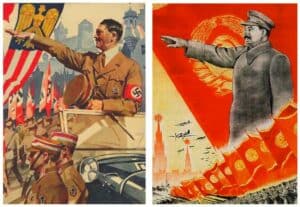
The establishment of Totalitarian Regimes (1949-1953)
- A totalitarian regime refers to a regime in which the power of the state over individuals is unlimited, that is to say, total: not only on the bodies (arrest, imprisonment, execution); but also on the minds (absolute obedience, lack of freedom, statehood). A totalitarian regime is, therefore, a form of dictatorship, tyranny, or despotism.
- At the national level, that is to say within each of the popular democracies, totalitarianism is implemented by the Communist Party and by its highest representative, the Secretary-General, who is also often the leader.
- It is he who, on the advice of the USSR, implements at the local level the political and economic decisions adopted in Moscow. It is he who, admiring Stalin, forges the cult of personality for his benefits, such as Erich Honecker in the GDR or Nicolae Ceaușescu în Romania.
- It is he who binds his fate to that of the USSR and persecutes all opponents of communism, the USSR, or Stalin, indifferently described as “enemies of the people”, “traitors”, “against “revolutionaries” or “rightists”.
Image Sources:
https://celebrity.fm/wp-content/uploads/2020/07/Joseph-Stalin-794x1024.jpg
https://upload.wikimedia.org/wikipedia/commons/thumb/9/95/Flag_of_Comecon.svg/1024px-Flag_of_Comecon.svg.png
https://assets.sutori.com/user-uploads/image/dc15bd10-c2c0-4178-8214-8741e3a041fa/770348ad1b7f436ce0d66761284eb4cc.jpeg

